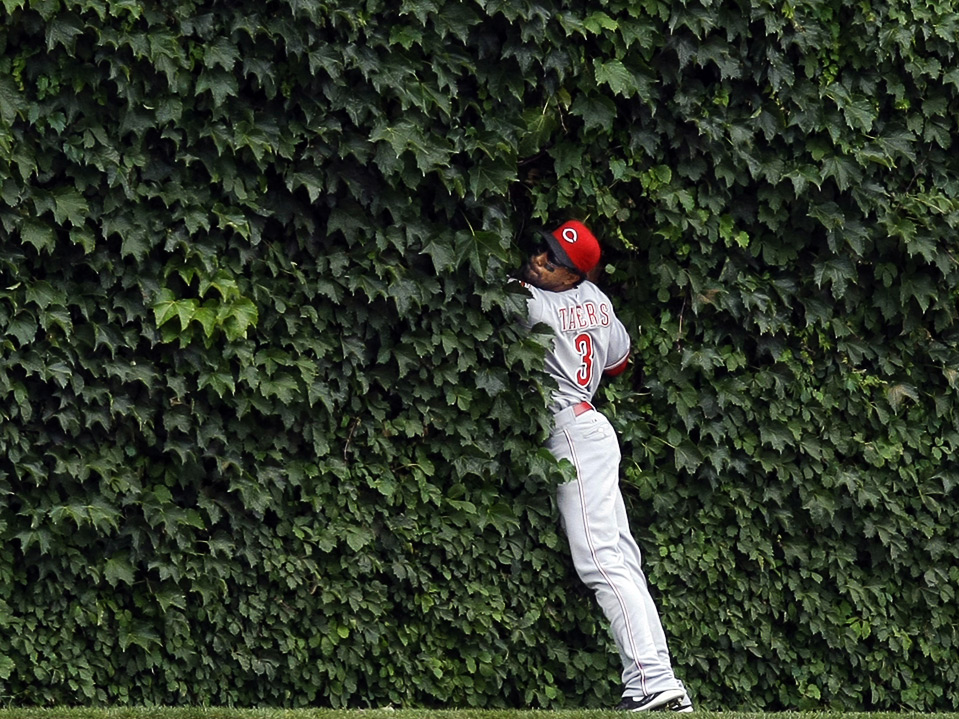- "1. Baseball hits top or face of screen in front of bleacher wall and bounces back on playing field -- In Play
- 2. Baseball hits top of screen and drops between screen and wall -- Home Run
- 3. Baseball hits screen and bounces into bleachers -- Home Run
- 4. Baseball sticks in screen in front of bleachers -- Double
- 5. Baseball sticks in vines on bleacher wall -- Double
- 6. Baseball comes out of vines -- In Play
- 7. Baseball hits leftfield or rightfield foul markers above painted mark -- Home Run
- 8. Baseball hits foul markers below painted mark and bounces back on playing field -- In Play
- 9. Baseball goes under grates in leftfield or rightfield and remains there -- Double
- 10. Baseball goes in or under grates on either side of home plate and remains there:
- Pitched Ball- One Base
- Thrown Ball - Two Bases
- Also: Players cannot enter the dugout steps at Wrigley Field to catch any foul pop fly."
Perhaps the most common of these rules is #5, where an umpire's rule of thumb comes into play. Hunter Pence did this in 2009 and although I don't have any video of it, we'll use him as an example. When the ball was hit and rolled under the ivy in right center, Pence immediately ran over and put both hands up in the air as if claiming innocence. Although I don't think this procedure is even in the MLB Rulebook, umpires understand this as a sign that the ball is stuck in the ivy and cannot be taken out, resulting in a double. However, had Pence gone through the ivy looking for the ball, the play is still active and the hitter could keep running for an inside the park homer. But also, had Pence just put his hands up even though he could get to the ball but didn't want to allow a triple, the umpire could deny his request for a double. See when a player puts their hands up using this rule, the umpire closest to the spot has to run out and make sure the ball is not in a place the outfielder could get it, if the umpire can find it at all.
Many home runs over the years at Wrigley have bounced into the screen then to be grabbed by a fan from the first row of the bleachers. These are only homers thanks to rule #2. However, if the ball doesn't touch the wall or get into the bleachers, apparently, it's not a home run. This is highly unlikely and I don't know that it has ever happened due to the angle of the screen, but according to rule #4 the ball must hit the wall or else it isn't a home run. I don't really understand this rule because the yellow line to signify where the home runs must be hit past is on the screen, meaning any contact on the top of the screen should be a home run.
I think the note at the bottom about foul pop flies is interesting as well. In the event that a player had enough time to enter the dugout via the stairs to catch a foul pop up, which I have never heard of in any stadium ever, would he know that the catch would be voided by use of the stairs? Who knows. Besides, who needs stairs when you can just awkwardly tumble over the railing? Well those were the main things I noticed in these rules. While some of these rules might never come into play, there's something you didn't know.


No comments:
Post a Comment